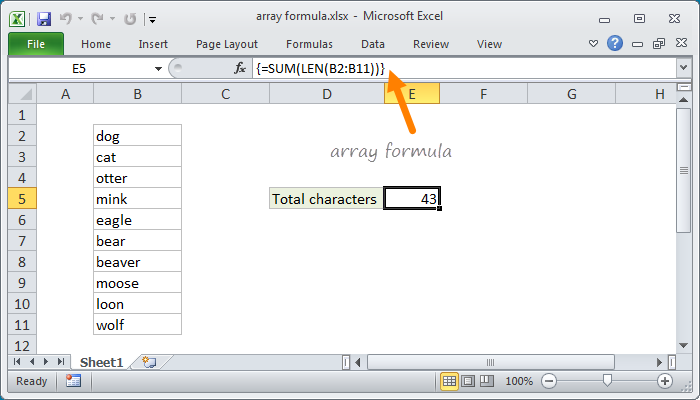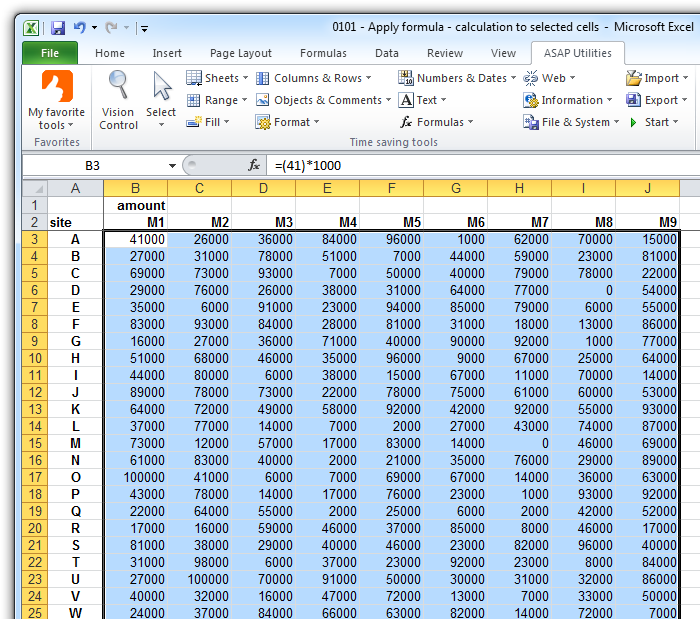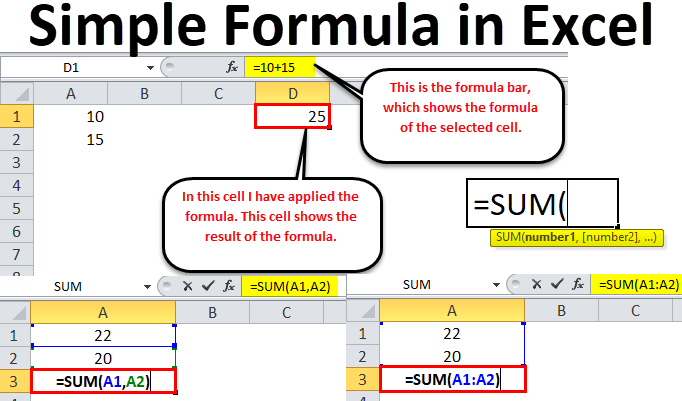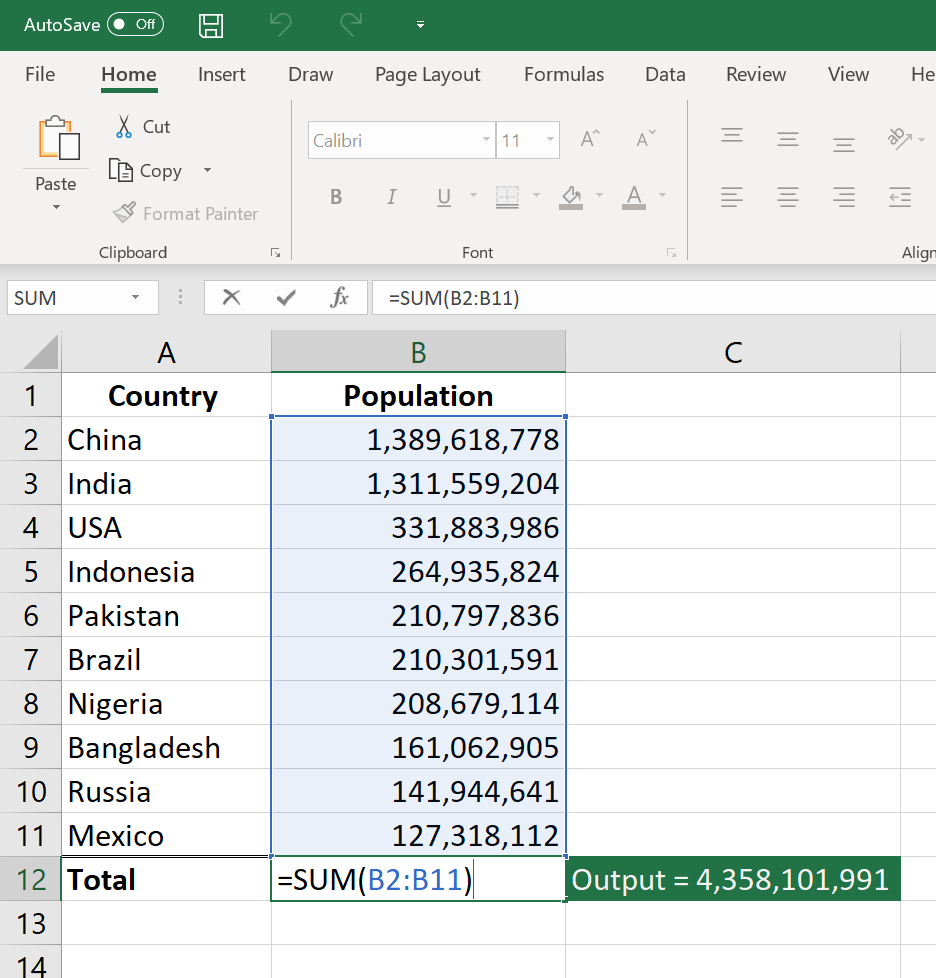Some Known Details About Sumif Excel
By pressing ctrl+change+facility, this will compute as well as return worth from multiple varieties, as opposed to simply private cells contributed to or multiplied by one another. Calculating the amount, product, or quotient of individual cells is very easy-- simply use the =AMOUNT formula and also get in the cells, values, or variety of cells you wish to do that arithmetic on.
If you're looking to discover overall sales earnings from several offered units, as an example, the variety formula in Excel is best for you. Here's exactly how you 'd do it: To start utilizing the range formula, type "=AMOUNT," as well as in parentheses, go into the very first of two (or three, or four) series of cells you would love to increase together.
This means multiplication. Following this asterisk, enter your second variety of cells. You'll be increasing this 2nd variety of cells by the first. Your progression in this formula should currently look like this: =AMOUNT(C 2: C 5 * D 2:D 5) Ready to press Go into? Not so quickly ... Due to the fact that this formula is so complex, Excel reserves a various key-board command for varieties.
This will acknowledge your formula as a selection, covering your formula in support personalities and efficiently returning your product of both ranges combined. In revenue calculations, this can lower your effort and time considerably. See the final formula in the screenshot above. The MATTER formula in Excel is denoted =COUNT(Begin Cell: End Cell).
For instance, if there are 8 cells with entered worths between A 1 and A 10, =MATTER(A 1: A 10) will return a worth of 8. The MATTER formula in Excel is specifically helpful for huge spreadsheets, wherein you wish to see just how several cells include real entries. Do not be deceived: This formula will not do any kind of mathematics on the worths of the cells themselves.
The Buzz on Excel Formulas
Making use of the formula in strong above, you can quickly run a count of active cells in your spreadsheet. The outcome will look a little something like this: To carry out the average formula in Excel, get in the worths, cells, or series of cells of which you're computing the average in the format, =AVERAGE(number 1, number 2, and so on) or =AVERAGE(Start Worth: End Worth).
Finding the average of a series of cells in Excel maintains you from needing to find private amounts and also then performing a separate department equation on your total amount. Using =AVERAGE as your initial text entrance, you can let Excel do all the benefit you. For recommendation, the average of a team of numbers amounts to the sum of those numbers, separated by the variety of products because team.
This will certainly return the amount of the values within a preferred variety of cells that all satisfy one requirement. For instance, =SUMIF(C 3: C 12,"> 70,000") would certainly return the sum of values in between cells C 3 as well as C 12 from only the cells that are better than 70,000. Let's say you desire to determine the revenue you created from a list of leads that are related to certain area codes, or determine the sum of specific staff members' wages-- but just if they fall over a certain amount.
With the SUMIF function, it does not need to be-- you can quickly accumulate the amount of cells that fulfill certain criteria, like in the income example over. The formula: =SUMIF(variety, standards, [sum_range] Range: The range that is being tested using your standards. Criteria: The requirements that determine which cells in Criteria_range 1 will be totaled [Sum_range]: An optional variety of cells you're mosting likely to accumulate in addition to the first Range entered.
In the instance below, we intended to determine the sum of the incomes that were above $70,000. The SUMIF feature added up the buck amounts that surpassed that number in the cells C 3 via C 12, with the formula =SUMIF(C 3: C 12,"> 70,000"). The TRIM formula in Excel is represented =TRIM(message).


Our Countif Excel Ideas
For example, if A 2 consists of the name" Steve Peterson" with unwanted rooms before the very first name, =TRIM(A 2) would certainly return "Steve Peterson" without spaces in a new cell. Email and also file sharing are terrific tools in today's work environment. That is, until one of your coworkers sends you a worksheet with some actually fashionable spacing.
Instead than meticulously removing and also including rooms as required, you can tidy up any kind of irregular spacing making use of the TRIM feature, which is used to eliminate added rooms from information (with the exception of solitary areas between words). The formula: =TRIM(message). Text: The text or cell from which you want to get rid of rooms.
To do so, we went into =TRIM("A 2") right into the Formula Bar, and also duplicated this for every name below it in a brand-new column beside the column with undesirable areas. Below are some various other Excel solutions you might discover useful as your information administration needs expand. Allow's state you have a line of text within a cell that you wish to break down right into a couple of various sectors.
Purpose: Made use of to draw out the first X numbers or characters in a cell. The formula: =LEFT(message, number_of_characters) Text: The string that you want to draw out from. Number_of_characters: The number of characters that you wish to draw out beginning from the left-most personality. In the example listed below, we got in =LEFT(A 2,4) into cell B 2, and also replicated it right into B 3: B 6.

Function: Made use of to remove characters or numbers between based upon placement. The formula: =MID(text, start_position, number_of_characters) Text: The string that you desire to extract from. Start_position: The setting in the string that you intend to begin drawing out from. For example, the initial position in the string is 1.

The Buzz on Countif Excel
In this instance, we went into =MID(A 2,5,2) into cell B 2, and copied it right into B 3: B 6. That allowed us to extract the two numbers starting in the 5th setting of the code. Purpose: Used to remove the last X numbers or personalities in a cell. The formula: =RIGHT(message, number_of_characters) Text: The string that you desire to extract from. formula excel beginning of month excel formulas java excel formulas absolute